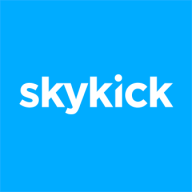

Find out what your peers are saying about Nutanix, Broadcom, IBM and others in Cloud Management.
| Product | Market Share (%) |
|---|---|
| Red Hat CloudForms | 1.4% |
| SkyKick Cloud Manager | 0.4% |
| Other | 98.2% |

| Company Size | Count |
|---|---|
| Small Business | 4 |
| Large Enterprise | 7 |
Manage container, virtual, private, and public cloud infrastructures
Managing a complex, hybrid IT environment can require multiple management tools, redundant policy implementations, and extra staff to handle the operations. Red Hat® CloudForms simplifies IT, providing unified management and operations in a hybrid environment.
As your IT infrastructure progresses from traditional virtualization toward an Infrastructure-as-a-Service (IaaS) model, CloudForms evolves, protecting your investments and providing consistent user experience and functionality.
SkyKick is a new kind of migration application that makes it fast, safe, and easy to move small and medium businesses to Office 365. SkyKick’s Application Suite is a cloud based solution consisting of three products that work together to help plan, move, and setup the migration to Office 365.
We monitor all Cloud Management reviews to prevent fraudulent reviews and keep review quality high. We do not post reviews by company employees or direct competitors. We validate each review for authenticity via cross-reference with LinkedIn, and personal follow-up with the reviewer when necessary.